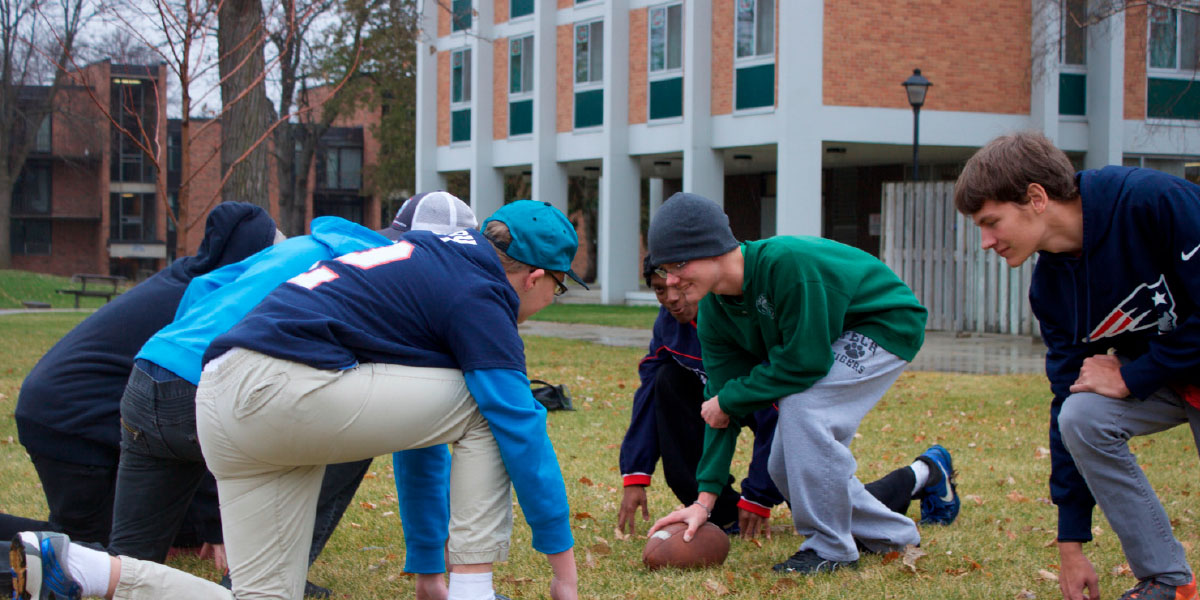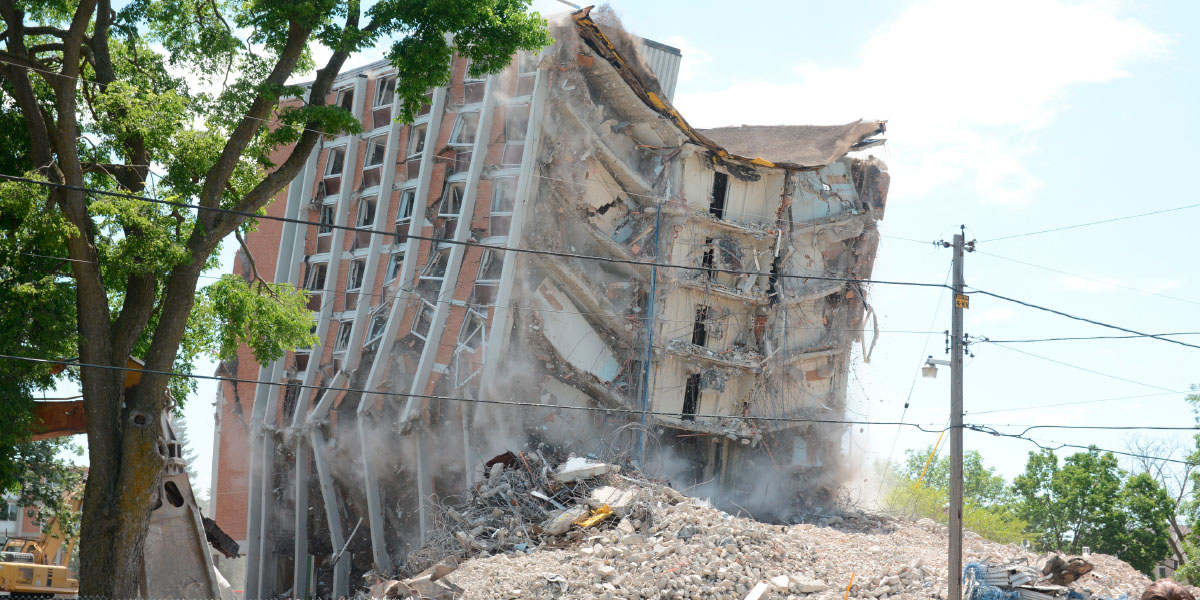Dynamic, active, shared. That’s one way to sum up current shifts in campus space management, says Elliot Felix, founder and CEO, brightspot strategy LLC, New York City. On the rise: developing spaces that you can more easily adapt as needs change, that create a sense of energy to attract people, and that serve multiple functions to maximize convenience and cost efficiency.
“Some institutions reshape their space based on a strategy, but for many it hinges on what spaces are easiest to measure,” says Felix. That’s why classrooms most often come under scrutiny. Occupancy data are typically readily available as a snapshot of underutilized or maxed-out spaces. Yet, classroom space for most institutions often consumes significantly less total square footage as compared to faculty and administration work spaces, where usage is more difficult to quantify.
While data are crucial to making wise decisions about space management, one mistake some campus leaders make when assessing space use is relying too much on peer benchmarking data. Simply following benchmarks is the best way to be average, says Felix. “While it is useful to know what others are doing, cutting and pasting someone else’s strategy won’t produce the best fit for your institution, and you’ll be doing what other institutions did five or 10 years ago instead of innovating.”
Clear trends have emerged surrounding space use, but each campus must assess what constitutes the best use of space based on its unique circumstances and priorities. The profiles that follow provide a glimpse of specific campus scenarios for space-related decision making.
Follow the Plan
“A plan doesn’t have to hem you in, but not having a plan limits your flexibility for getting where you need to go with campus infrastructure,” says Phil Moessner, assistant vice president of facilities management, St. Cloud State University (SCSU), St. Cloud, Minn. The key is having a good plan.
Indeed, the comprehensive facilities plan developed by SCSU in 2015 has lived through multiple transitions in top leadership—including president, provost, and CBO—with only minor tweaking. Those leader transitions include Tammy McGee, formerly SCSU vice president for finance and administration, and now chief financial officer at Dunwoody College of Technology, Minneapolis. McGee oversaw efforts to flesh out the road map detailing the condition of each building across campus.
In McGee’s assessment, SCSU’s plan is resilient because it is grounded in data and is comprehensive in nature. It takes into account utilities use as well as internal and external conditions of all built assets and real property campuswide. Planning efforts included input from each function across the institution, as well as ideas from academic affairs, student affairs, and SCSU’s technology group about what was most needed going forward. The process included hundreds of hours of public comment to talk about immediate and aspirational needs. “We also made transparency a priority in identifying how to pay for everything—whether through general operations, revenue funds, appropriations from the legislature, or from grants and donor funding,” says McGee. “This wasn’t simply a high-level snapshot.”

Check your reality. The primary catalyst for SCSU’s comprehensive facilities plan was a recognizable shift in student enrollment largely correlating with statewide and regional demographic changes. Multiple years of significant growth in the past led to nearly 500,000 square feet of facilities space added since 2000. In more recent years, steady declines and a leveling off of the student population to its current 14,000-plus levels have left leaders of this comprehensive university with the challenge of figuring out how to maintain a financially sustainable physical plant footprint while also reconsidering the need for this extra square footage. “We had to build a plan that specifically named rightsizing and downsizing of campus buildings and property as a strategic priority,” says McGee.
Downsizing has included selling land, including one parcel about 50 miles from the main campus that had been donated to the university years back when SCSU leadership envisioned expansion into a different academic direction that did not ultimately emerge. “Through our planning process, we determined that continuing to hold on to these excess properties was not good stewardship and was keeping us from investing in other priorities such as classroom innovation,” says McGee.
Rightsize. Another priority driving SCSU’s facilities plan is improving the residential experience of students. Surrounded by a river and private homes, SCSU’s campus is compact and dense, and was lacking informal recreation space, says McGee. The decision to demolish one of the older residence halls that was no longer needed allowed for some much-needed green space.
“Demolishing the hall was one of those pivotal moments for our institution,” says Daniel Gregory, interim provost. “Prior to that, the thinking was that you would never want to remove built space.” Yet, having previously gone through a significant academic reorganization, in which some programs were closed and some added, helped set the stage for the community to think more critically about institutional priorities, says Gregory.
“That doesn’t necessarily make the discussions easier,” he says. “Key to implementing our plan has been a facilities director who can point to the plan, explain the data behind the plan, and have those sometimes difficult conversations about what it means for space to go away or for the need to change spaces, and why certain decisions are in the best interest of the institution or students,” says Gregory.
Factor in flexibility. The university is now midway through its first five-year phase of its 20-year outlook aimed at improving space use. Even as the university recalibrates its physical space to match current needs, plans are underway to develop a new learning commons that will centralize student services and include space for evening and weekend programs, among other activities, to bring more buzz to the campus.
“For some of the bigger things such as major renovations of buildings, the reality is that legislative funding is not at the same level as we assumed when our plan was written,” says Moessner. “Some things have had to slide out of order, but this is more of a change in timing rather than a change in concept. While we haven’t deviated dramatically from the plan, we need to remain flexible to let the plan evolve and shift.”
As one example, the university had mothballed an older residence hall with the intent to use it for swing space prior to potentially demolishing or renovating it. “Instead, we opened it back up as student residential space, but with fewer amenities and at a lower price point,” says Moessner. The university’s residential life staff began to think about the opportunity of providing a different value proposition for some SCSU non-freshman and nontraditional transfer students who might be used to a higher level of autonomy or who were previously living off campus and might want to remain on campus. “Initial response has been positive, and we are waiting to see if there is sustained interest in this scaled-back version of residential living.”
Show stewardship. Because of the condition of some campus facilities across the sector, we need bold leadership from business officers and other senior leaders to think about how best to use our assets, says McGee. “One area where you can add real value as a business officer is in showing good stewardship of facilities assets.” Too often, the politics of space can get in the way of doing that, she adds.
There may also be concerns about messaging. For instance, if your campus has too much space and appears to be in downsize mode, what impact might this have on future giving or on what students think about the institution? “Institution leaders may need to find a new way of branding what is taking place on campus,” says McGee. If you are a public institution with an open access mission, describing how you are making your campus as cost efficient as possible actually shows good stewardship of resources. “Rethinking space can be a driver for efficiency across a campus, and all CBOs must think about this going forward if they aren’t already.”

More Elbow Room
During the past decade, enrollment at Centre College, Danville, Ky., has grown by 30 percent to its current 1,430 full-time students. For a campus that is 98 percent residential, that steady squeeze on living space and seating capacity in the college’s central dining commons was exacerbated by finding office space for new faculty and staff hires.
According to Brian Hutzley, Centre College’s chief financial officer, vice president, and treasurer, the short-term reflex was to acquire houses adjacent to the campus periphery for student housing, as well as to transition some office spaces into beds. “In the process, we ended up having to split some departments between buildings, which in turn introduced some friction among those vying for space.” To better address these and other emergent issues, the college convened a space committee to work collaboratively on campus space solutions, says Patrick Noltemeyer, chief planning officer and special assistant to the president.
Layer comparisons. Increasingly cramped quarters was the primary driver behind the 2017 launch of a six-month comprehensive master planning effort. This included dozens of meetings and open sessions to solicit input from every occupant group on campus and to compile user data on classrooms, meeting rooms, and office space. The comprehensive assessment has gone way beyond space use, overlaying those findings with an updated energy master plan and factoring in priorities related to deferred maintenance, ADA compliance, landscaping, and even signage for the 200-year-old campus.
“As we move forward with any upgrade or expansion, maximizing energy efficiency is a top priority,” Hutzley says. As part of overall planning, the college commissioned an engineering review of all lighting and HVAC systems. That essential to-do list will inform the college’s operating budgets and capital requests as the campus works its way through its space retrofit.
One thing at a time. The challenge for a small, highly residential institution such as Centre College may be finding enough flex space to allow for renovations, says Noltemeyer. “In our case, we were already so tightly packed that we couldn’t afford to take anything offline. That meant trying to free up space around the edges or to renovate one floor at a time.” One short-term project did add three classrooms to help accommodate more sections of those courses in highest demand so that the college could maintain smaller class sizes. Currently, 61 percent of classes have a size of less than 20 students, says Noltemeyer.
The new master plan calls for addressing space needs through a combination of renovation and new construction. First up is a new residence hall, scheduled for completion in August 2019, that will not only add 180 new beds, but will also provide that much-needed swing space in advance of renovating and expanding existing spaces. It will also help the college reclaim some of the former office spaces it had converted to student housing for the short term, says Noltemeyer.
The new residence hall will also account for almost 20 percent of the projected $100-million master plan, says Hutzley. The vast majority of the remaining funds will be devoted to renovation and expansion of existing space. Within that category, priorities include the college’s science complex, and campus center and dining commons, which will gain some sorely needed kitchen capacity. In addition to normal campus operating funds allocated for upgrades and minor renovations, the college’s board has approved $30 million in debt financing. It is looking to third-party grant funding and donor pledges to help accomplish other space expansion and retrofits.
The planning process also helped identify some underlying needs, says Noltemeyer. “As we renovate and expand, we plan to introduce more informal study spaces in every building on campus, including every nook and cranny where we could place a couch and tables.” The suggestion from students to open the cafeteria for additional evening study space has already been implemented. “Under normal operations, the space was cleaned and doors closed by 8 p.m. We worked with our food provider to reopen the space after hours.” Now, dining facility staff lightly touch up the space before reopening for breakfast, adds Noltemeyer.
Centralize what’s central. Since the kickoff of initial planning efforts, new priorities have emerged that include an intercultural center and a sacred space. “Both are now in our master plan, with the intention of locating these spaces somewhere in the heart of the campus,” says Noltemeyer. This will require relocating certain functions; one possibility is the registrar function. This is not a statement on the importance of that function, rather it is a recognition of how technology has shifted a host of student transactions and services, says Noltemeyer. “While students used to line up to register for classes, most of this is now accomplished online. Students typically only visit the office to pick up a transcript.” Adds Hutzley: “The automation of certain functions today is allowing campuses to rethink where to locate more essential person-to-person activities.”
Scrutinize Your Space
In 2014, the University of Wisconsin System faced criticism from some state legislators about the need for new construction amid declining enrollments. This led to discussions at the University of Wisconsin System regarding space-related policies that were needed to impose a stricter rationale for campuses to request new space, says Alex Roe, the system’s associate vice president for capital planning and budget.
Fast forward and the system’s “no new net square footage” policy implemented in 2015 outlines the eligibility threshold criteria for institutions requesting new space: The facility will generate revenue; the cost to upgrade or fix an obsolete structure is more than 75 percent of the cost to build new; the current structure has serious code violations; or the structure will serve a new or growing academic program priority.
“Bottom line, if you don’t meet at least one of those four criteria, your request won’t be considered. If you want new administration space, you probably aren’t going to get it,” explains Roe. Not only do campus leaders need to justify their new space requests, but at the same time they must also identify what space they plan to eliminate. The message is starting to resonate, adds Roe. “In this latest biennium budget cycle, we approved adding two million square feet and removing one million square feet.”
Focus. The criteria have forced campus leaders to be more intentional about the kinds of spaces they most need. “We’re also seeing more robust feasibility studies coming from our campuses as leaders take a more stringent look at ROI and the cost to renovate versus cost of a new structure,” Roe says.
One challenge in Wisconsin, as is the case for many systems of higher education, is that a big chunk of the university system’s inventory—probably 50 to 60 percent—was built between 1950 and 1975. That means a lot of aging infrastructure with lots of inflexible building materials and poor energy efficiency standards. Midcentury science buildings in particular—of which there are many post-WWII GI Bill-era structures that popped up—are extremely difficult to renovate to modern HVAC requirements, says Roe. “In our current budget, we received at least three science building requests that are under review.” As the sciences continue to become more integrated with other disciplines, this will certainly have an impact on space going forward, says Roe.
“The truth is that many campuses have enough buildings that meet that historic iconic alumni mug criterion,” she says. While these are most often very expensive to maintain, a campus isn’t going to tear them down. The more sustainable approach to meeting future space needs is to consider constructing a 30-year building instead of a 100-year building, when you don’t know what instruction is going to require several decades from now, suggests Roe.
Here are some other trends that Roe has noticed:
Swap. Campuses are seeking more flexible spaces without lots of interior walls, but with lots of utilities. In other words, there’s a demand for more makerspaces with open floor plans for collaboration and informal learning opportunities, notes Roe. “There is a big push for this within engineering programs in particular.” In some cases, these changes can be made to existing structures without adding to total square footage. “The catch is that institution leaders must get creative in thinking about which current uses and activities to give up or relocate to gain new space without building more.”
Optimize. Campuses are self-identifying underutilized space and considering new approaches to optimize use. For instance, most campuses across the system are essentially flat on residential space. “Our approach there is to renovate existing space and not add new beds,” says Roe. Several campuses with a housing surplus are looking to partner with other local colleges to offer housing to their students who might want an on-campus living experience.
Rent. Especially where the edge between institutions and their communities becomes more amorphous, one driving question should be this: “Why keep building?” says Roe. “We don’t have to own everything. For a nascent program or grant-funded initiative, why not lease something in town and let it grow and bubble organically?”
Roe’s advice to CBOs when confronted with requests for new space: Start by asking what is core to mission? Can programs share space? Get leaders to consider multiple ways to get what you need other than a new building.
For all space decisions, campus leaders need good data—not only what shows use of space and condition, but also implications of bad space versus good, says Roe. “Leaders must be pragmatic about making the right investments. As budgets get cut, this can’t be a mere guess. If you don’t have the right data to guide decision making, people can pick holes with whatever you do.”
KARLA HIGNITE, Fort Walton Beach, Fla., is a contributing editor for Business Officer.



